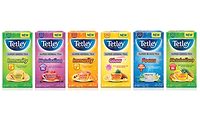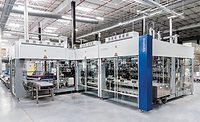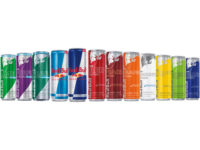Channel Strategies
No-touch cashless systems offer convenience, speed and security
Beverages account for 34 percent of vending machine revenue in 2020

In “Every Day is a Winding Road,” Grammy-award winning singer-songwriter Sheryl Crow sings about “hitching a ride with a vending machine repairman.” She reminds listeners that, “everybody gets high, everybody gets low, these are the days when anything goes.” While the vending machine industry is experiencing its share of “highs and lows,” enhanced credit and debit card payment systems, cashless systems, machines with healthier foods and beverages, and more customizable options could help spur sluggish sales.
In the July 2019 “Vending Machine Operators in the US” report, Los Angeles-based IBISWorld notes the struggles that the industry has faced. “Over the five years to 2019, revenue is expected to decline at an annualized rate of 0.4 percent to $7.7 billion, including an anticipated 2.5 percent decrease in 2019 alone,” it states. “The revenue decline has been primarily attributed to dampened demand for industry products. As junk foods, such as soda and chips, typically make up the largest amount of industry revenue, the stagnancy in per capita soda consumption and increase in the healthy eating index have adversely affected industry sales.”
Experts also note that the COVID-19 pandemic — and no foot traffic —is substantially impacting the vending industry as well as thousands of on-premise businesses worldwide.
“With people across most of the United States currently living under some kind of movement restrictions, foot traffic has been greatly reduced in the country, hurting the industry,” says Dmitry Diment, industry analyst at IBISWorld. “The big challenge for industry operators once the economy begins to reopen will be to understand how to properly disinfect machines in order to make consumers comfortable with using them. Here, cashless machines will likely see the most foot traffic, though it is likely that many consumers will remain cautious about their use regardless of the actions companies take.”
Adding cashless acceptance to vending machines continues to be a growing trend. “Cashless is growing beyond traditional card acceptance,” says Chuck Reed, vice president and general manager for vending at Crane Payment Innovations (CPI), Malvern, Pa. “Mobile and contactless are the next big thing and consumers are demanding it everywhere they go. Accepting both cash and cashless payment has a positive impact on same location sales due to enhancing the payment options for consumers.”
Reed points out that vending technology continues to evolve, with many suppliers opting to pay the monthly connection costs similar to a cell phone, to have remote monitoring of machines with sales and alerts/alarms to identify machines with low stocks and operational problems. The remote monitoring is facilitated through a cellular telemeter that fosters remote monitoring and/or cashless acceptance.
“We don’t expect 100 percent of machines to be fitted with telemeters, but certainly the current penetration rate will double within the next seven to 10 years,” Reed says. “Another trend is the use of screens on machines to provide selection or even advertising information. The screens can vary in size from 7 inches up to 20 inches and attract more consumers to the machine.
“CPI is expanding what we mean by connected machines by enhancing the interface between our payment hardware and a mobile app so that diagnostic and configuration data and tools are easier to consume by less-trained individuals,” Reed continues. “Our goal is to increase machine uptime and reduce vending operator costs for servicing equipment.” Perking up one’s day
In addition to technological advancements, companies are releasing new barista-quality machines that brew up premium coffees and teas with the push of a button to perk up one’s day.
“COTI is designed to bring café quality service to your work site breakroom, mall, etc., with barista-quality drinks,” says Kelle Hahn, director of marketing for Atlanta-based Crane Merchandising Systems (CMS). “In addition to adding elegance to any location, COTI consistently delivers great-tasting coffee, fresh leaf teas, hot chocolate, chocomilk and soups with tantalizing taste, aroma and color.”
Manufactured by CMS in Chippenham, Wiltshire, United Kingdom, COTI by Crane currently is available in the United Kingdom, but is set to launch in North America in August, Hahn says.
COTI by Crane features a 21.5-inch color touchscreen interface with full HD video along with nutritional and allergen information displayed by selection. For made-to-order coffees, customers need only select the “freshbrewed” coffee format —beans, ground or instant — and choose from seven varietals: Americano, Flat White, Cappuccino, Café Latte, Café Mocha and Espresso. Additionally, consumers can opt for decaf coffee, freshleaf teas that are soluble or freshbrewed, and can choose hot or cold water and to add cold flavored syrups.
Vending machines continue to sell a variety of beverages, with the most revenue generated by carbonated soft drinks (CSDs), IBISWorld’s Diment says. Yet, the demand for hot and cold teas is likely to increase, he adds.
“The beverage segment accounts for an estimated 33.6 percent of revenue in 2020. Products in this segment include cold beverages (30.7 percent), such as bottled CSDs and milk, and hot beverages (2.9 percent), such as coffee, tea, hot chocolate and soup,” Diment says. “Within the beverage segment, soda generates the most revenue, followed by non-carbonated drinks. Non-carbonated drinks include ready-to-drink teas, flavored water and regular water. Energy drinks also contribute a significant amount to this segment's revenue.
"Overall, this segment has increased as a percentage of total revenue during the five-year period, driven by the growth of cold beverages,” he continues.
Although healthier products have been introduced, they are not likely to propel the vending industry into new high-growth cycles, IBISWorld’s report states. The market research firm projects that industry revenue will decline at an annualized rate of 2.7 percent to $6.7 billion during the five years to 2024.
Yet, experts note that the addition of cashless acceptance, programs that communicate advertisements and promotional offers, more energy-efficient systems and the creation of the next-generation of vending equipment could drive higher sales.
Looking for a reprint of this article?
From high-res PDFs to custom plaques, order your copy today!






